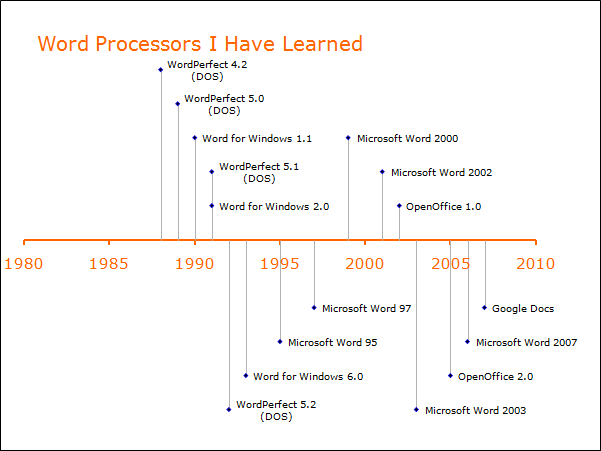If you have worked in educational professional development, at some point you have asked your audience this question. “What technology would you like to know more about?” I asked this question to my school district in the early 1990s. Microsoft had just come out with Office 3.0 (the first version) which contained Word 2, PowerPoint 3 and Excel 4. I think they averaged those numbers and gave it the version number three.

For several years I repeated summer PD with my teachers and each year the same “technology” was requested. Most teachers were interested in learning more about Microsoft Office. Sometimes there would be a few teachers asking specifically for one application like Excel or PowerPoint, but it was always something to do with Office.
Times have changed. The number one item I hear about now is the SmartBoard, but Office follows in a close second. If a school does not own SmartBoards and does not plan to buy them, Office is still number one.
The funny thing is, I have never taken a class to learn any version of Office. I have read several books and used assorted online resources, but I have never sat in a class for the purpose of learning how to use Office. Yet, I have learned to use sixteen different word processors since my first job.
The technology standards for the state of Ohio have an indicator which states all ninth graders will:
Demonstrate proficiency in all productivity tools (e.g., word processing, spreadsheet, database, desktop publishing).
And these standards were adopted almost six years ago in 2003.
I am using Office 2007 right now. Office 2010 will be out later this year. The freshmen I have in class this fall will still be using the old version. Long before they graduate and get jobs in schools, Office 2010 will be out and widely adopted. By the time they teach ten years, few people will still be using Office 2007.
This is why a personal professional development plan is so important. If we do not keep up with the basic technologies on our own, we will never master the use of advanced technology tools which really are exciting to use in the classroom.
